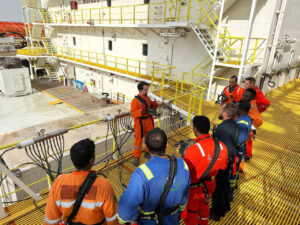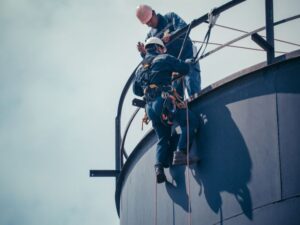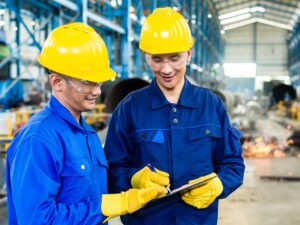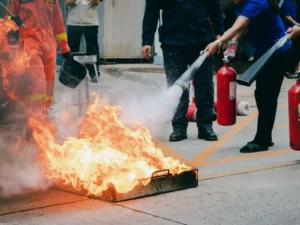Land Rig Inspection Certification
- Description
- Curriculum
- Reviews
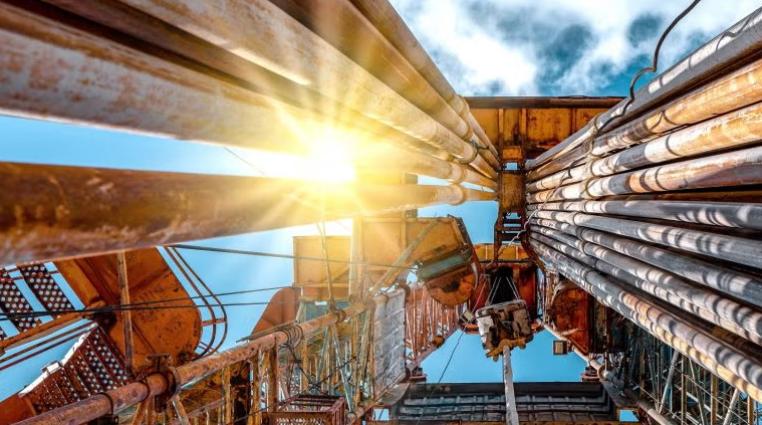
The objective is to build and enhance the candidates’ knowledge of rig equipment and maintenance through compliance with industry standards, regulatory requirements and safe working practices.
Candidates will learn to apply the relevant standards and requirements to verify rig equipment condition, improve safety and potentially reduce accidents.
To ensure optimum rig performance, reduce downtime and maintain personnel safety, a robust planned maintenance and accurate inspections are essential.
The Land Rig Inspection Cetification (LRIC) course focuses on the most common equipment deficiencies and explains the working principles of major drilling equipment using detailed examples from our technical inspection database.
The LRIC course consists of interactive virtual classroom training and allows group participation and discussion
Course Objective:
- Independently carry out a basic rig inspection
- Describe the main inspection criteria for major equipment
- Identify major items that have an impact on the safety and operation of a rig
- Recognize the indicators of the overall condition of a drilling rig
- List the relevant standards (such as API) and their implications for drillingequipment
- Understand the basics of EX equipment installed in hazardous areas
- Evaluate basic maintenance and inspection procedures on the rig to identify
- Compliance with good working practices and industry standards
Who Should Attend:
- Rig Managers
- Drilling Engineers
- Toolpushers
- Maintainance Supervisors
- Mechanics & Electricians
- Drillers
- HSE Consultants
- HSE Supervisors / HSE Advisors
Pre Requisite: Atleast 2 years of working experience on Land Rig
-
1Drawworks
Drawworks are powerful electrically-driven winches that lower and lift the drill string and casing. They also raise the derrick on land rigs using special raising lines. Some drawworks on older land rigs also drive the rotary table using a heavy duty chain drive.
-
2Rotary Table
A rotating table rotates and supports the drill string when
connections are to be made for the drill string or the casing. It is AC or DC electrically-driven or driven from the drawworks. Some rotary tables cannot be used to rotate the string; instead the top drive is used. Some rotary tables are hydraulically-driven to rotate with a low torque and low speed only. -
3Top Drive
A top drive is a mechanical device on a drilling rig that provides
clockwise torque to the drill string to facilitate the process of drilling a borehole. It is an alternative to rotary table. It is located at the swivel place and allows a vertical movement up and down the derrick. -
4Independent Swivel
An independent swivel is a rotary tool that is installed in the hook at the bottom of the travelling block and allows the drill pipe to rotate while supporting the weight of the drill string. It also allows the passage of mud through the drill pipe at the same time.
-
5Crown and Travelling Block
A crown block is a device situated at the top of an oil rig or derrick. It sits on the crown platform, which is a steel platform located along the upper portion of the rig. The crown block works in conjunction with a similar component, the traveling block, which is positioned just below the crown platform. Together, these two systems are known as the block and tackle.
-
6Mast / Derrick
A derrick is a lifting device composed of a tower or a guyed mast, such as a pole, which is hinged freely at the bottom and which is sometimes controlled by four lines to keep the derrick straight. The derrick allows the rig to pull/lower three drill pipes (called a stand) at the same time.
-
7Winches
Winches are air or hydraulically driven lifting devices that lift heavy equipment and sometimes personnel (man-riding winch).
-
8Lifting and Handling Equipment
API RP 8B gives guidelines and establishes requirements for inspection, maintenance, repair and remanufacture of items of hoisting equipment used in drilling and production operations, in order to maintain the serviceability of this equipment.
-
9Mud Pump
Mud pumps are large reciprocating piston/plunger devices that are specially designed to circulate drilling fluid (mud) under high pressure down the drill string and back up the annulus.
-
10Mud System
The mud system is a system of shakers, mud centrifuges, mud cleaners, mud desanders and mud esilters designed to circulate drilling fluid to the drill bit and back to the surface. A mud system has two sections. The high pressure section delivers mud from the pumps to the drill bit.
The low pressure section sends mud back to the surface for treatment and supplies mud from the mud pits back to the main pumps using a large number of centrifugal pumps. A vacuum degasser removes small particles of gas from the mud.
-
11Diesel Engine
The diesel engine is a high compression internal combustion engine that drives the main AC or DC generators, which provide power for the rig.
-
12Air Systems, Refrigeration and Air Conditioning
Rig air compressors on the rig are used to supply compressed air to several auxiliary equipment and functions. Usually the systems build on drilling rigs are 120 psi systems fitted with several air receivers for the storage of compressed air. The air from the compressors is used for the operation of the rig floor winches, start air for the engines, operation of the air operated BOP hoist, supply air for the bulk transfer system, etc
-
13Crane
A crane is a machine for raising, lowering and revolving heavy equipment. They are used on land rigs and MODUs (marine cranes), and may be driven electronically, hydraulically or with a diesel engine. They can also lift heavy equipment between rigs and supply boats on MODUs and assist in building up land rigs on new locations.
-
15Drilling & Safety Equipment
When talking about safety equipment one should split it up into four (4) main categories.
• Firefighting Appliances.
• Fire and Gas Detection Systems.
• Drilling Safety.
• Hazardous Materials -
16Firefighting Appliances
Firefighting appliances consist of both fixed systems and portable equipment. In addition to fire hoses and portable fire extinguishers fire resistant protective clothing, respirators and fire doors are also included.
-
17Fire and Gas Detection Systems
Fire detectors sense one or more of the products resulting from fire, such as smoke, heat, infrared and / or ultraviolet light radiation, or gas. Fire detection systems include automatic fire detection, fire alarms and fire suppression activation.
-
18Pollution Control
The pollution control checklist includes equipment present at the rig site that prevents pollution to the environment.
Maintaining pollution control depends on location and local legislation and the use of oil-based mud requires many extra pollution control measures.
-
19Ram Type Preventer
A ram-type preventer is part of the well control equipment integrated into the BOP. It seals the annulus of the well, seals around the drill pipe or performs a Complete Shut Off (CSO) if no drill pipe is inside the hole. Rams can hang off the drill string and shear the drill pipe
-
20Annular Preventer
An annular preventer seals the annulus of the well, seals around any pipe-casing or performs a CSO if no drill pipe is inside the hole. It is part of the well control equipment integrated into the BOP. The hydraulic closing pressure drives a piston upwards, which forces the sealing element upwards and inwards to form a seal around the pipe in the hole.
-
21Choke Manifold
The choke and kill manifold is a collection of pipes and valves that restricts or stops pressure/flow and form part of the BOP system.
Some land rigs have a simple choke manifold. Modern rigs use a selection of gate valves integrated into a choke and kill manifold. Both types are accompanied by a mud/gas separator and vent lines. Upstream of the chokes, the manifold is connected to the BOPs. Downstream of the chokes, vent lines are routed to the mud/gas separator and the flare pit on land rigs. -
22Gate Valve
A gate valve is part of well control equipment integrated into the choke and kill lines of the BOPs. They seal off the choke and kill valve outlets. On each outlet there is normally one remotely-operated gate valveand one manually-operated gate valve.
-
23BOP HPU
The BOP HPU (Hydraulic Power Unit) consists of three hydraulic circuits made by a set of accumulator bottles and hydraulic pumps. These are the accumulator circuit, the manifold circuit and the annular BOP circuit.
Hydraulic power is stored in the accumulator bottles and this provides pump capacity to keep the accumulator system under pressure. The HPU provides control valves to select different functions of the BOP equipment.

